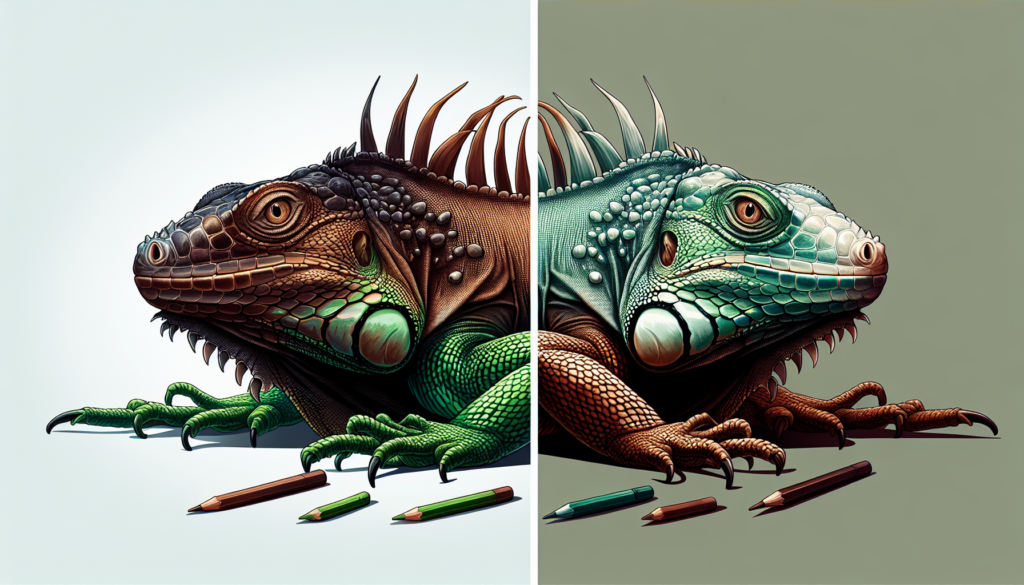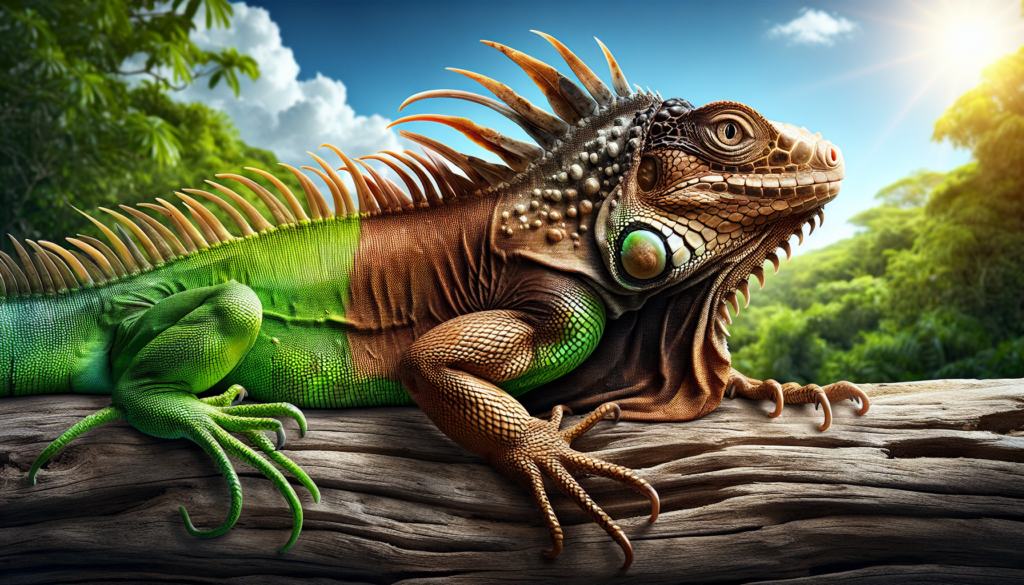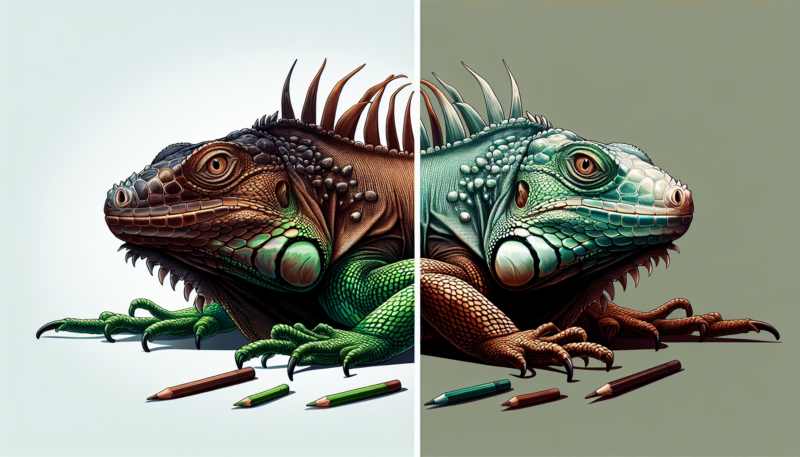Have you ever wondered why your once vibrant green iguana has suddenly started turning brown? It’s a common concern among iguana owners, and in this article, we’ll explore the possible reasons behind this color change. From natural camouflage instincts to health issues, there are several factors at play. So, if you’ve noticed your green iguana’s color transforming into a shade of brown, fear not! We’ll unravel the mystery and provide you with insights on how to keep your scaly friend healthy and happy.
Possible Reasons for Color Change
If you have noticed that your green iguana is turning brown, you may be wondering what could be causing this change in color. There are several possible reasons for this color change, including environmental factors, health issues, and behavioral factors. Let’s take a closer look at each of these factors to help you better understand why your green iguana may be turning brown.
Environmental Factors
Temperature and Humidity
Temperature and humidity are crucial factors in maintaining the overall well-being of your green iguana. If the temperature in their habitat is too low or the humidity levels are not optimal, it can cause stress and lead to a change in their color. Green iguanas are ectothermic reptiles, meaning they rely on their environment to regulate their body temperature. When they are too cold, they may darken their color to absorb more heat, resulting in a brown appearance.
Lighting
Proper lighting is essential for the health of your green iguana. Inadequate UVB lighting can interfere with their ability to produce Vitamin D3, which is necessary for healthy bone development. Without enough UVB exposure, your iguana may experience metabolic bone disease and their color may become darker or appear brownish. Additionally, incorrect light cycles can disrupt their natural day-night rhythm, which may impact their coloration.
Habitat Changes
Any sudden changes in your green iguana’s habitat can cause them stress and affect their color. For example, if you have recently moved their enclosure to a new location, changed the cage size, or removed hiding spots, they may become stressed and display a brownish coloration. It’s important to ensure that their habitat remains consistent and provides them with a sense of security.

Health Issues
Skin Shedding Process
Like many reptiles, green iguanas shed their skin periodically. During the shedding process, their color may temporarily change, and patches of old skin may appear brownish. This color change is usually temporary and should revert to their normal green hue once the shedding is complete. However, if your iguana is experiencing difficulties shedding properly, such as stuck shed, it can result in a persistent brownish appearance.
Vitamin Deficiency
A lack of essential vitamins, particularly Vitamin D3, can significantly impact the coloration of your green iguana. Vitamin D3 is crucial for calcium absorption and utilization in reptiles. Without adequate Vitamin D3, your iguana may develop calcium deficiencies, leading to abnormal bone growth and changes in color. Ensure that your green iguana’s diet is well-balanced and includes proper supplements to prevent vitamin deficiencies.
Parasites or Infections
Parasites or infections can also affect the color of your green iguana. These health issues can cause stress and result in a change in their skin pigmentation. If you suspect that your iguana may be dealing with parasites or infections, it is crucial to consult with a veterinarian who specializes in reptile health. They can conduct the necessary tests and provide appropriate treatment to restore your iguana’s health and color.
Behavioral Factors
Stress or Fear
Green iguanas are sensitive creatures, and they can change their color in response to fear or stress. If your iguana feels threatened or scared, they may darken their color to blend in with their surroundings or to appear larger and more intimidating. This change in coloration is a natural defense mechanism, and once they feel safe again, their color should revert to its normal green shade.
Dominant or Submissive Behavior
In social interactions between green iguanas, changes in color can indicate dominant or submissive behavior. Dominant iguanas may darken their colors to assert their dominance, while submissive iguanas may exhibit a lighter or duller coloration to appease the dominant individual. These color changes often occur during territorial disputes or mating rituals.
Color Adaptation
Green iguanas are excellent at adapting their coloration to their environment. They have the ability to change their skin color to better blend in with their surroundings. This color adaptation can occur if your iguana feels threatened or if they are trying to camouflage themselves to avoid predators. However, it’s important to note that iguanas primarily change their color between shades of greens and browns, rather than completely altering their color.

Conclusion
There are various reasons why your green iguana may be turning brown. Environmental factors such as temperature, humidity, lighting, and habitat changes can all affect their coloration. Health issues like skin shedding problems, vitamin deficiencies, and infections can also cause a change in color. Furthermore, behavioral factors including stress, dominance behavior, and color adaptation can impact their appearance. It’s important to monitor your iguana’s overall health and environment to ensure they maintain their vibrant green color. If you have any concerns about your green iguana’s color change, it’s always advisable to consult with a veterinarian specializing in reptile care for professional advice and guidance.
